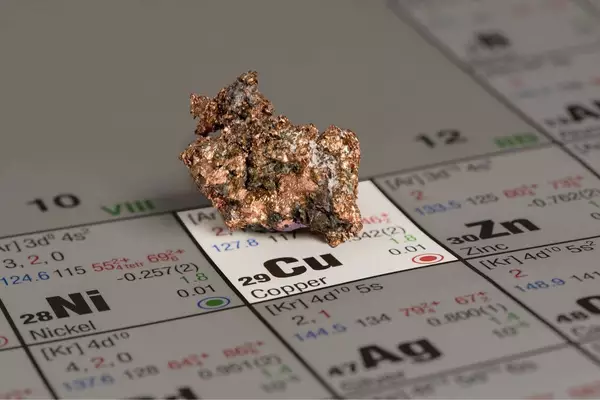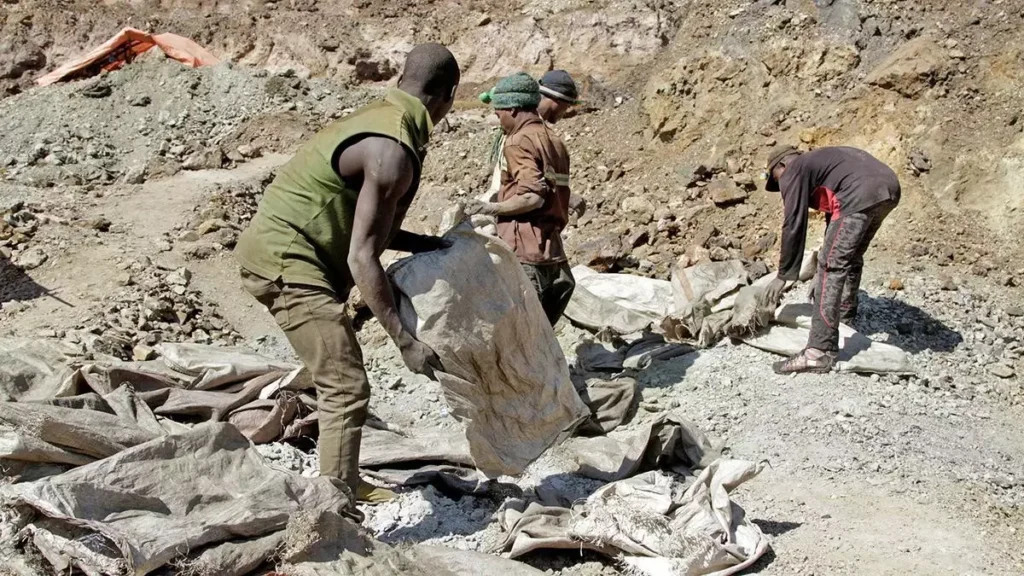China’s CMOC and other miners have applied for copper from the Democratic Republic of Congo (DRC) to be registered for delivery against London Metal Exchange (LME) contracts.
- Congo last year produced 2.7 million tonnes of copper or 12% of global supplies.
About Copper (Cu):
- Copper (Cu) is a chemical element known for its pinkish-orange hue when freshly exposed.
- It has the symbol of CU from the Latin cuprum.
- It has an atomic number of 29.
- Copper’s density is around 8.96 g/cm³ at room temperature.
- Copper’s alloying with tin produces bronze, known since around 3500 BC. This was the first metal alloy.
Properties:
- High thermal and electrical conductivity, softness, malleability, and ductility.
- Resistant to corrosion and possesses antimicrobial properties, which make it suitable for various applications.
Uses:
- Copper’s excellent conductivity makes it a primary choice for manufacturing heat and electrical equipment.
- Its corrosion resistance is beneficial in marine hardware, while its antimicrobial properties are utilized in medical environments.
- It serves as a building material and is used in art and decorative objects.
- Copper alloys like sterling silver are significant in jewelry, cupronickel in coins, and constantan in temperature measurement devices.
Electrical Conductivity of Copper:
- Its superior conductivity makes copper an essential component in electrical circuits, contributing to its widespread use in modern and historical technologies.
Chemical Properties of Copper
- Copper forms compounds like copper(II) salts, which appear blue or green and are used in pigments.
- When exposed, copper develops a green patina, known as verdigris, which is particularly noted in architectural applications like roofing.
Copper Deposits and Production:
| Category | Details |
| Top Countries in Copper Production | – Chile: Largest producer, 23% of global production. |
| – Other top producers: Peru, the Democratic Republic of Congo, Australia, Russia | |
| Copper Deposits in India | – Singhbhum (Jharkhand), Balaghat (Madhya Pradesh), Jhunjhunu and Alwar (Rajasthan) |
| Copper Production in India | – Khetri (Rajasthan), Ghatsila (Jharkhand), Jhagadia and Dahej (Gujarat), Tuticorin (Tamil Nadu) |
Ref: Source
| UPSC IAS Preparation Resources | |
| Current Affairs Analysis | Topperspedia |
| GS Shots | Simply Explained |
| Daily Flash Cards | Daily Quiz |
Frequently Asked Question:
Why is copper denoted by the symbol Cu?
Copper is denoted by the symbol Cu from its Latin name ‘cuprum,’ derived from the word ‘Cyprus,’ where it was mined in ancient Roman times.
What is the electron configuration of copper?
The electron configuration of copper (Cu) is [Ar] 3d^10 4s^1.
Is copper toxic to humans?
While copper is an essential nutrient for human health, excessive exposure can be toxic, leading to health issues such as copper toxicity, which affects liver and kidney function.
What are the main uses of copper?
The main uses of copper include electrical wiring, plumbing, roofing, and the production of alloys like brass and bronze. It is also used in manufacturing decorative items and jewellery due to its attractive colour and malleability.
Why is copper ideal for making wires?
Copper is ideal for making wires due to its excellent electrical conductivity, which allows for efficient transmission of electricity, and its ductility, which makes it easy to draw into thin wires.



